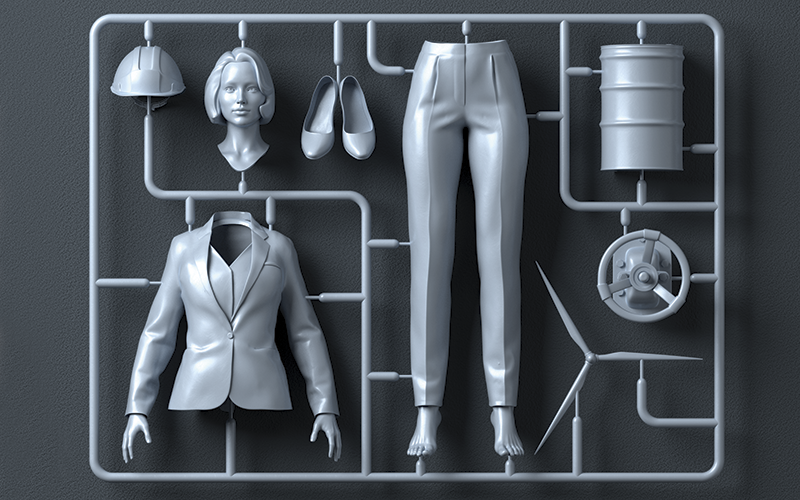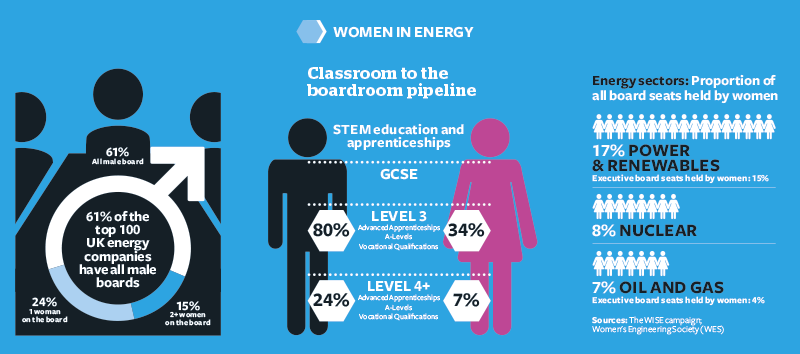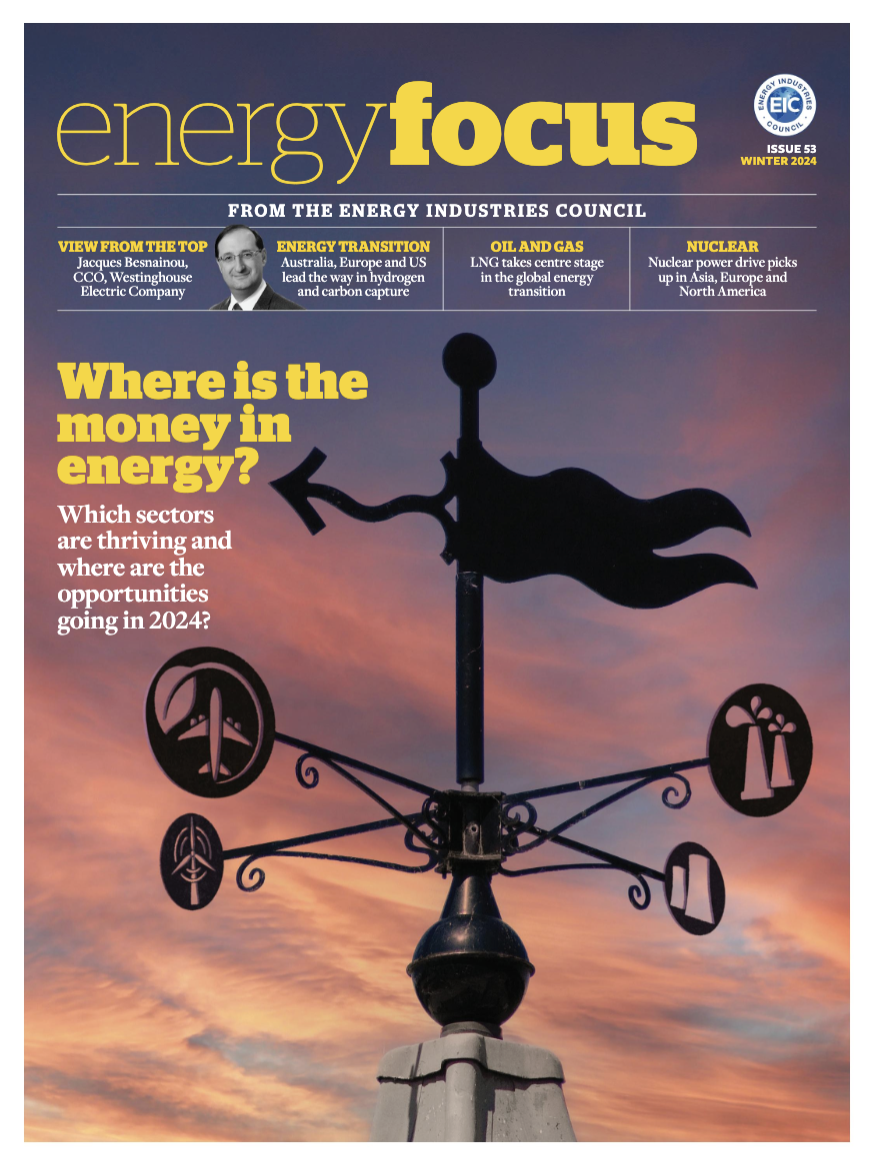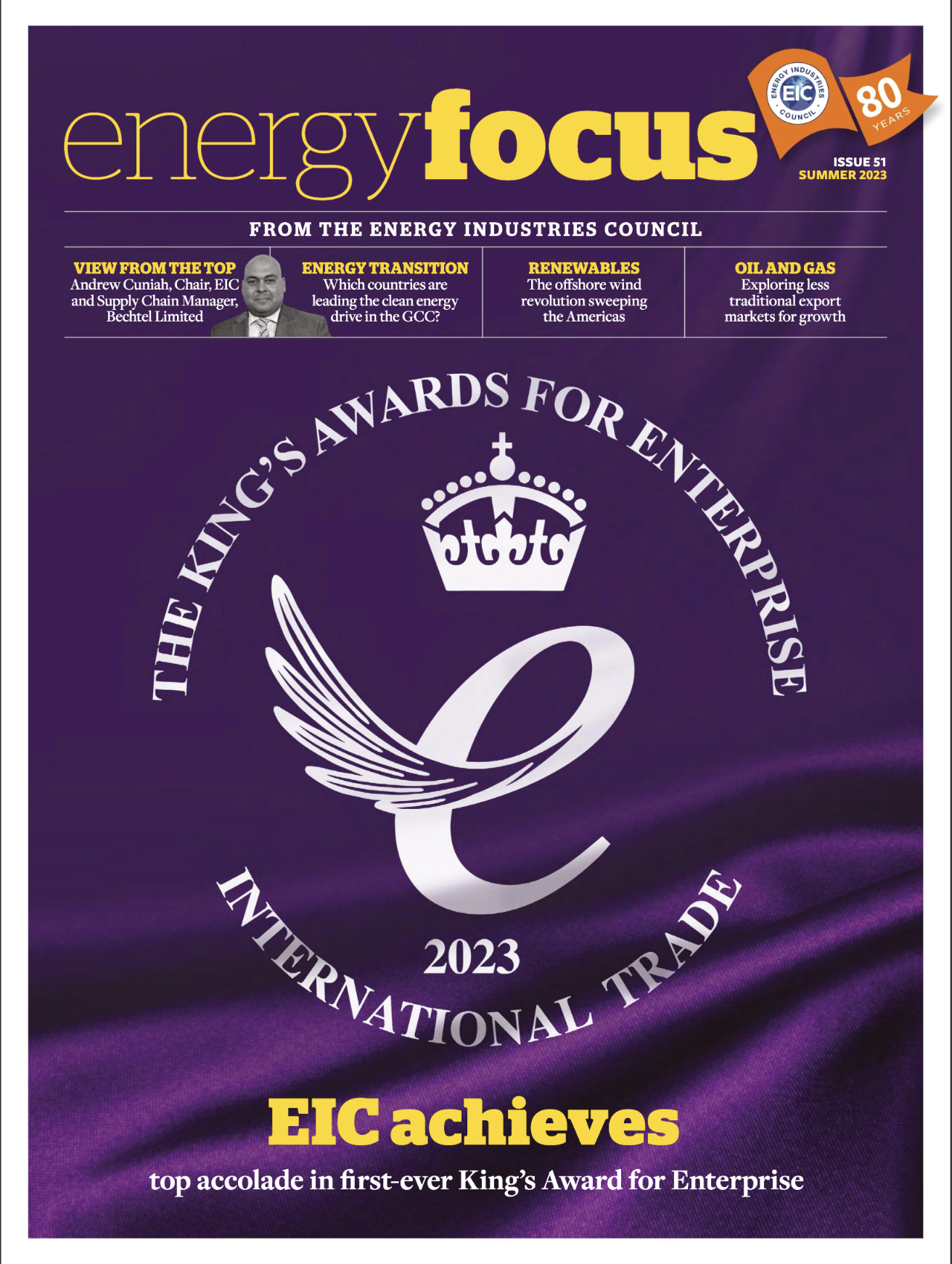Engineering the future: searching for solutions to the engineering gender imbalance
Recruiting women into the engineering sector has long been a tricky issue, plagued by misconceptions and stubborn traditions. David Nicholson shares some of the latest thinking on how to attract women into the profession.

If you were asked to name the world’s most famous engineer or energy industry pioneer then who would you pick? Brunel perhaps? Or you might say Max Steineke if you work in oil and gas, perhaps Enrico Fermi if you’re interested in nuclear power. But how many people would (or could) name a woman?
Perhaps it’s not such an easy task; after all, these examples are historical figures who readily spring to mind and come from a time when female engineers were few and far between to say the least.
So, where are the female pioneers today?
Well, the good news is that they do exist. More and more women are taking their seat at the top table of global energy companies – Vicki Hollub, CEO at Occidental Petroleum and Lynn J Good, CEO at Duke Energy for example – and most Energy Focus readers will know or have heard of Angela Knight, former Director of Energy UK, or Dame Sue Ion, Honorary President of the Nuclear Skills Academy and former Chair of the Nuclear Innovation Research Advisory Board. Outside of the boardroom, it’s more common than ever before to see a woman marking out a building site or cubing up for a concrete pour.
Things are changing, but how much?
‘Proportionately, things haven’t changed much,’ says Sarah Simpson, Operations Director for multi-disciplinary Create Consulting Engineers, where she works alongside an energy team. ‘What has changed is the attitude, which is moving towards increasing diversity. The atmosphere has definitely shifted.’
Simpson grew up surrounded by science – ‘All of the men in my family were engineers’ – which gave her a natural path into the discipline. Today she strives to attract more women into engineering, as the profession seeks to address the ‘paralysingly huge skills gap’ in engineering.
‘We’re all doing what we can to widen the field of recruitment,’ says Simpson. ‘If you look at other areas like medicine and law, they have made huge leaps in recruiting women.’
Engineering a new image
Engineering faces the multiple challenges of perceived ‘maleness’, a confusion between the work of engineers and mechanics, and a persistent perception of engineering as a ‘dirty’ profession.
‘I’ve never worn a pair of overalls in my life,’ says Simpson, who describes her role as more project management. She has several strategies to improve female recruitment: anonymising CVs by education and gender ‘before anyone technical sees them,’ asking agents specifically to put forward women candidates, offering part-time and job share roles, and rebranding some job titles. ‘It took me a whole year to get a female CV for a job in drainage,’ recalls Simpson. ‘We might have done better to call it a “hydro-geologist”.’
Instilling more positive images of engineering is a major part of the task, argues Kathryn Jackson, Researcher at Nuclear AMRC in Sheffield. ‘The subconscious images tend to be very male – power, performance, speed – domains that are very attractive to men. So we’re presenting a different side, where engineering is a caring profession, about solving climate change, developing life-saving technologies…’ Jackson sees the family as a massive influence. ‘Part of the challenge is raising awareness among parents. So we run evening STEM events in schools where parents come along. They’re often surprised at the wealth of opportunities,’ she says.
Jackson has to deal with perceptions of nuclear energy’s safety and its long-term viability, especially in the light of the 2005 Fukushima disaster and the differing views of technology as an energy source or a weapon. ‘Women’s perception of nuclear is much lower than men’s, so it’s one thing we’re trying to do, to improve its popularity among women,’ says Jackson.

At the National Nuclear Laboratory, between 25 and 30% of the apprentices are female, which is a strong representation compared with other similar fields. Improving the proportion of women boosts general business performance, says Jackson: ‘Gender diversity makes a business more dynamic and competitive. Women’s decision-making is more collaborative than men’s.’
There’s mounting evidence that men favour a more diverse workplace. Male-dominated businesses are seen as old fashioned, monocultural places which are less appealing on many levels. And challenging the stereotype doesn’t have to mean women behaving like men, Jackson argues. Her colleague Samantha Biddleston, a Welding Technologist at Nuclear AMRC, is a case in point. ‘Sam’s hobby is hair and beauty,’ says Jackson. ‘She’s a good example of a feminine role model in engineering.’
Like Sarah Simpson, Biddleston grew up with an engineer father. ‘Now I’m studying for a degree in engineering,’ she says. ‘The profession has offered me broader horizons that weren’t on offer elsewhere.’
For Rob Chaplin, Principal Naval Architect at BAE Systems’ In Service Submarines, fostering an interest in the field needs to start at a young age. He’s visited schools where year 2 and 3 children (aged between six and eight) are fully engaged in STEM subjects, both male and female. Yet by year 5 (around 11 years old), interest among girls has waned.
‘We need to show that engineering doesn’t just involve fixing cars and installing boilers,’ says Chaplin. ‘I drive a desk. We need to push that it’s a fulfilling, varied, challenging job where you may need to provide an urgent response to a problem. My salary is a bit lower than some of my peers in finance, but I work a 37-hour week and I love my job.’
Powering ahead
Traditionally, oil and gas companies have offered high salaries and better terms than those in renewables. But the oil price crash and the strengthening economic and technical case for renewables is shifting the balance, according to Chaplin.
The wind energy sector has attracted an increasing number of women, says Rhys Jones, Head of Technological Affairs at RenewablesUK. ‘Wind attracts more women than other power sectors, because of its positive image. It’s a modern, future technology and young women want to be involved in something making the world a better place.’
Job security in oil and gas has weakened, and there are often more flexible working patterns in renewables, says Jones. ‘It’s also about valuing people: we need to say “you’re a creative problem solver, we want you to come into a top end career, the equivalent of being a barrister or a surgeon”.’
Given this fair wind, future generations of engineers may be spoilt for choice when it comes to famous female role models.






Follow us
Advertise
Free e-Newsletter